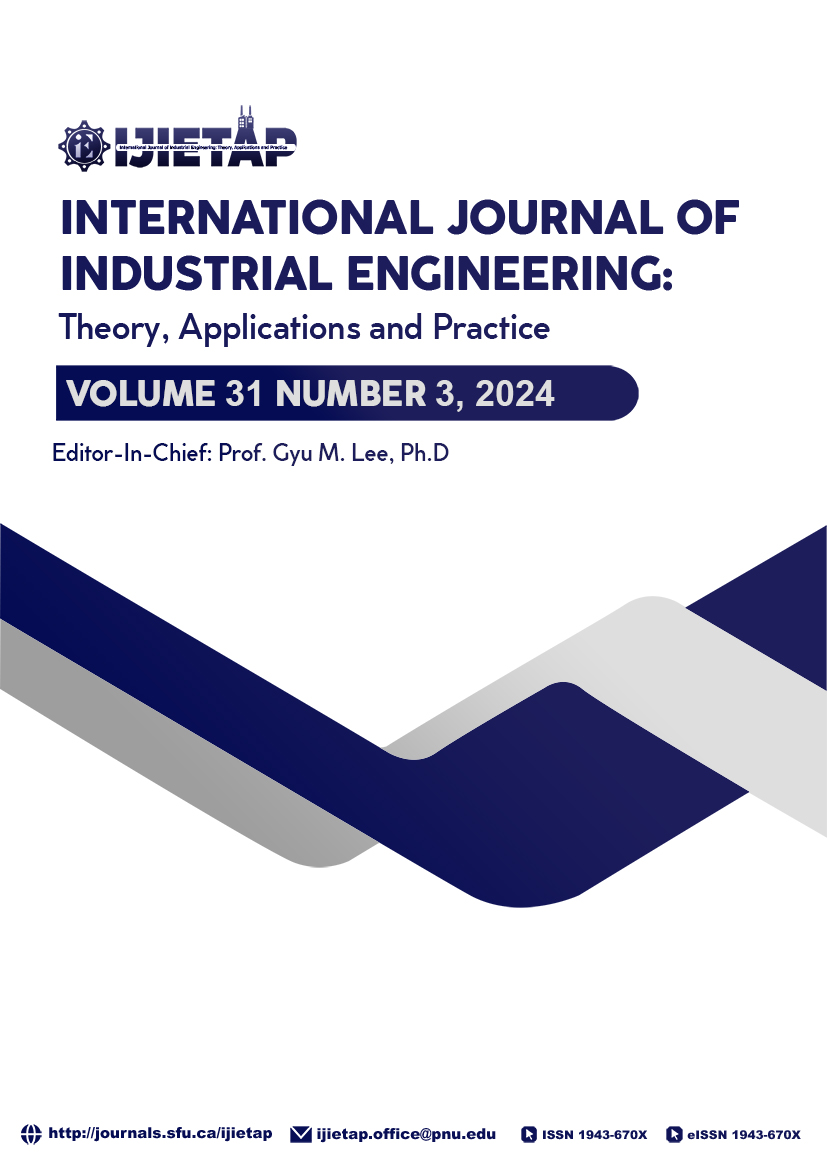Intelligent Demand Forecasting Approaches for Spare Parts in The Energy Industry
DOI:
https://doi.org/10.23055/ijietap.2024.31.3.8131Abstract
In this study, two intelligent demand forecasting approaches are used to forecast the spare parts demand in the energy industry. In the first approach, a stacked generalization-based demand forecasting technique that combines traditional time-series forecasting and machine-learning methods is developed. In the second approach, external information (EI) is incorporated into the first one. Thus, the stacked generalization-based demand forecasting technique is used as a base model, and the EI is used to focus on predicting the peak demand; consequently, significant forecast errors can be minimized. A case study of a natural gas liquefaction company is then considered to test the performance of these methodologies. Our results show that the proposed techniques perform significantly better than the previous methods. Compared with the mean absolute scaled error and relative geometric root mean squared error of the company’s forecasts, our intelligent demand forecasting approaches yield a 40.07% (36.81%) and 2.07% (3.40%) increase in butterfly-valve demand forecasting (spiral wound gasket) when no EI is used, and a 57.78% (60.41%) and 5.73% (7.36%) improvement with EI, respectively.
Published
How to Cite
Issue
Section
License
The Author(s) must formally transfer each article's copyright before publication in the INTERNATIONAL JOURNAL OF INDUSTRIAL ENGINEERING. Such transfer enables the Journal to defend itself against plagiarism and other forms of copyright infringement. Your cooperation is appreciated.
You agree that the copyright of your article to be published in the INTERNATIONAL JOURNAL OF INDUSTRIAL ENGINEERING - THEORY, APPLICATIONS, AND PRACTICE is hereby transferred, throughout the World and for the full term and all extensions and renewals thereof, to INTERNATIONAL JOURNAL OF INDUSTRIAL ENGINEERING - THEORY, APPLICATIONS, AND PRACTICE.
The Author(s) reserve(s): (a) the trademark rights and patent rights, if any, and (b) the right to use all or part of the information contained in this article in future, non-commercial works of the Author's own, or, if the article is a "work-for-hire" and made within the scope of the Author's employment, the employer may use all or part of the information contained in this article for intra-company use, provided the usual acknowledgments are given regarding copyright notice and reference to the original publication.
The Author(s) warrant(s) that the article is Author's original work and has not been published before. If excerpts from copyrighted works are included, the Author will obtain written permission from the copyright owners and credit the article's sources.
The author also warrants that the article contains no libelous or unlawful statements and does not infringe on the rights of others. If the article was prepared jointly with other Author(s), the Author agrees to inform the co-Author(s) of the terms of the copyright transfer and to sign on their behalf; or in the case of a "work-for-hire," the employer or an authorized representative of the employer.
The journal does not provide the author copy of the final paper when it is published. The author(s) can make(s) a subscription to INTERNATIONAL JOURNAL OF INDUSTRIAL ENGINEERING - THEORY, APPLICATIONS, AND PRACTICE if they want to get the final paper that has already been published.
The journal is registered with the Library of Congress (ISSN # 1943-670X). All rights reserved. No part of this publication may be reproduced, stored in a retrieval system, or transmitted in any form or by any means, electronic, mechanical, photocopying, recording, or otherwise, without the prior written permission of the journal.
The author reserves patent and trademark rights and the right to use all or part of the information contained in the article in future non-commercial works.





